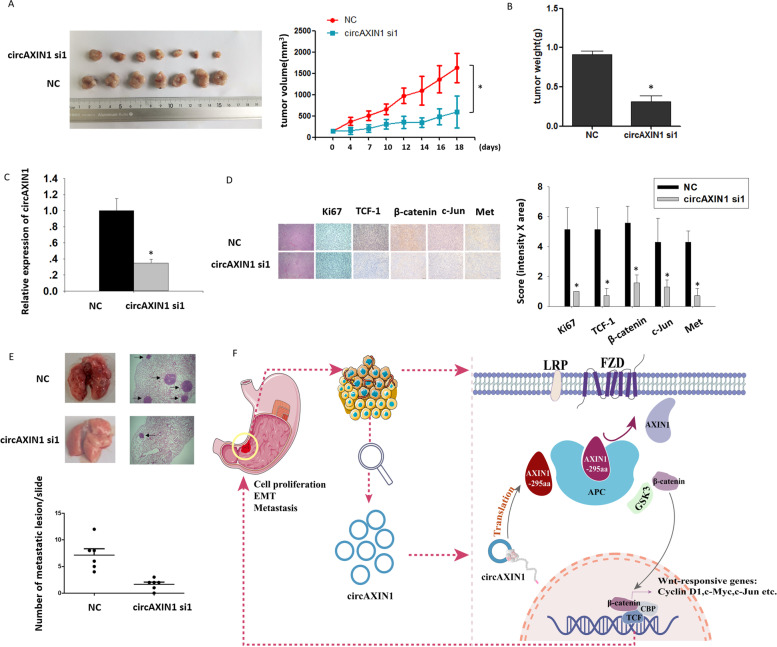Fig. 9.
Inhibition of circAXIN1 suppresses tumor growth and metastasis of GC in vivo. a Injection of cholesterol-conjugated circAXIN1 siRNA to the subcutaneously formed tumors significantly reduces tumor size. Tumors were treated with negative control (NC) or circAXIN1 siRNA1 and tumor volume was measured and calculated every 2 to 3 days. b Tumor weights of the NC and circAXIN1-siRNA1 groups (n = 7). c The expression of circAXIN1 is reduced in resected tumors from the circAXIN1-siRNA1 treated group. d The expression of Ki67,TCF-1, β-catenin, c-Jun, and Met is significantly reduced in circAXIN1-siRNA1-treated tumors. Representative images of immunohistochemistry assays performed on tumor sections from the NC and circAXIN1 siRNA1 groups. e Tail vein injection of circAXIN1 siRNA1 inhibits the lung metastasis of GC cells in mice. Lung metastasis lesions were stained with H&E and the number of metastatic lesions was counted. f A graphical abstract of the findings. CircAXIN1 is highly expressed and is associated with lymph node metastasis in GC. CircAXIN1 encodes a functional peptide, AXIN1-295aa, which competitively binds to APC, leading to the release and nuclear translocation of β-catenin. Eventually, β-catenin transactivates the canonical Wnt pathway and induces the expression of Wnt-dependent genes to promote cell proliferation and migration

